There are as many as 20 painted churches throughout the Hill Country of Texas and at least 15 of these churches are listed on the National Registry of Historic Places. When you visit Schulenburg, Texas, you’ll be able to see four of the most well-known and impressive examples of the painted churches. You can easily visit these four painted churches of Schulenburg in one day as they are just a short distance from one another. Schulenburg is officially designated “Home of the Painted Churches.”
What are the Painted Churches?
The Texas Hill Country was settled in the 1800s by German and Czech immigrants, many of whom were fleeing religious oppression. They built the churches in the late 1800s and early 1900s and decorated them to emulate the grand churches they left behind in Europe. The churches feature beautiful stained glass windows, hand-painted sculptures, angels, filigree, faux-marble, and stencils. Everything was created by hand, some of it over 100 years ago.
![]() Texas Hill Country was settled in the 1800s by German and Czech immigrants. They built their churches in the late 1800s and early 1900s and decorated them to emulate the grand churches they left behind in Europe. Share on X
Texas Hill Country was settled in the 1800s by German and Czech immigrants. They built their churches in the late 1800s and early 1900s and decorated them to emulate the grand churches they left behind in Europe. Share on X
The Four Painted Churches of Schulenburg, Texas
The Painted Churches of Schulenburg, Texas, are located in the nearby unincorporated communities of High Hill, Dubina, Ammannsville and Praha. You can take a guided tour (see below) or visit the churches on your own. Remember that these churches are all active places of worship. You may visit them Monday through Saturday from 9am to 4pm but be respectful of any events or services that may be going on during those times when you visit.
The painted churches look pretty unassuming from the outside. They look like any other country church. The inside, however, is a different story. It’s quite a contrast from the plain white or brick exteriors to the colorful and ornate interiors.
![]() The painted churches look pretty unassuming from the outside. They look like any other country church. The inside, however, is a different story. Share on X
The painted churches look pretty unassuming from the outside. They look like any other country church. The inside, however, is a different story. Share on X
Nativity of Mary, Blessed Virgin Catholic Church (St. Mary’s) – High Hill
Hosts at my RV park told me that if I only had time to visit one of the painted churches, this one was it. It was pretty easy to see why when I walked into the church that is known as the “Queen of the Painted Churches.”
When I walked in, I immediately felt awe-struck. I certainly wasn’t expecting what I saw. Everything, from the 18 intricate stained glass windows to the beautiful ceiling, was amazing. What is truly amazing about the ceiling is that the vaults (arches) are an illusion created by the painting rather than structural vaults made of brick or stone.
History of St. Mary’s in High Hill
St. Mary’s was built in 1906 by noted Texas architect, Leo M.J. Dielmann. At the time, the church hierarchy was encouraging communities in Texas to build in the practical mission or Spanish style. This idea was rejected by local church leaders who wanted churches built of brick or stone, as too many earlier churches had been lost to fire and storms. The interior of St. Mary’s is wood but it is protected by its brick exterior.
The darkness and shadows inside the church, enhanced by the stained glass windows rather than large windows that let in a lot of natural light, exemplify the Gothic style. The dim light makes images seem more mysterious.
Ferdinand Stockert and Hermann Kern did the decorative painting of St. Mary’s in 1912. The artists first painted their images on canvass then glued them to the wood walls.
Sts. Cyril and Methodius Catholic Church – Dubina
In 1856, a group of Czech settlers arrived in Fayette County at an oak-studded spot they called Dubina (dub in Czech means oak grove). Here they constructed their first church in 1877. A freed slave and blacksmith, Tom Lee, made the iron cross that topped the steeple.
Like many churches in the area, this church was destroyed by a hurricane in 1909. The community raised the funds to hire architect Leo Dielmann to draw up the plans. The steeple of the new church was topped by the iron cross that was recovered from the rubble of the first church.
No records survived that indicate who did the original painting inside the church. At any rate, the original artwork was all painted over with white in the 1950s. In the 1980s, when the other churches were being recognized for their historic significance and beautiful adornments, the parishioners decided to restore the church. They used stencils found in the church as well as meticulously uncovering old designs to restore the church to its former glory.
This is the only one of the four painted churches that you need a tour guide to enter. There is a locked gate across the entryway. You can view and photograph through the gate but can’t go inside, thus the reason I don’t have more photos of the interior.
Saint John the Baptist Catholic Church – Ammannsville
I have seen the interior color of this church described as everything from cotton candy to Pepto-Bismol. By most, it seems to be considered a pale, rosy pink. To me personally, I’d call it more salmon than pink but I guess “the pink one” sounds better than the salmon one!
The current St. John’s is the third church built at this location. The first one was destroyed by the hurricane in 1909. The second, which burned in 1917, was built by Leo Dielmann. The exterior was Victorian and the interior was as ornate as St. Mary’s in High Hill. The current church, built in 1919, is much simpler with an open, airy structure minus the columns in the previous church.
When the interior of the church was painted, the unknown artist disappeared when the work was completed. Finally, in the 80s and 90s, a design professor, Buie Harwood, compared paintings from churches where the artists were known to work at St. John’s. She concluded that artist Fred Donecker was the painter at St. John’s.
St. Mary’s Church of the Assumption – Praha
St. Mary’s in Praha was built in 1895. Somehow, it was spared by natural disasters and is, therefore, one of the oldest of the painted churches.
The pale blue-green of the ceiling edged with foliage and flowers is beautiful but the alters in this church are especially striking. They are hand-carved, painted white and gilded with gold leaf.
Much of the interior was painted by a Swiss-born artist named Gottfried Flury from Moulton, Texas. In 1901, Father Netardus was made pastor at Praha. He embellished some of the artwork in the church. In more recent years, a lot of the upkeep and restoration was done by local artist, Gene A. Mikulik, who passed away in 1997.
Guided Tours of the Painted Churches of Schulenburg
The Greater Schulenburg Chamber of Commerce has docents who give guided tours of the painted churches of Schulenburg that last 3-4 hours. You have to make a reservation well in advance (two weeks) and pay a $50 deposit. The tour itself is $10 per person and you provide the transportation. They offer some van tours on Monday and Thursday during October and part of November.
I didn’t know about the tour until I arrived on Friday afternoon and I was planning to tour the churches on Monday. There just wasn’t time to contact the chamber and see if something could be arranged on such short notice. I ran into a tour at one of the churches and could tell the group was getting some great historical information.
Piano Bridge
I didn’t completely follow the tour map above when visiting the Painted Churches of Schulenburg. I wanted to cross over Piano Bridge so I visited St. Mary’s in High Hill first then traveled down FM 615 towards Dubina. It was a beautiful, sunny day making for a gorgeous drive down the narrow, tree-lined lane.
Piano Bridge was built in 1885 by the King Bridge Company of Cleveland, Ohio. The old iron bridge, one of the few remaining in Fayette County, spans the Navidad River and connects High Hill and Dubina. There is a sign a few miles from the bridge warning that there is a weak bridge ahead and there is no turnaround. There are no weight limits posted until you get right up to the bridge — where there is no turnaround!
Some say that the bridge got its name from the sound vehicles made when crossing the bridge. A few years ago, boards on the bridge were nailed down so vehicles no longer make the twanging sound. Bridge aficionados, however, say the bridge got its name from its structure — it is a “piano-wire truss bridge.” However it got its name, it was definitely fun crossing over this historic landmark. I could picture riders on horseback and wagons passing over the narrow bridge.
Until next time…






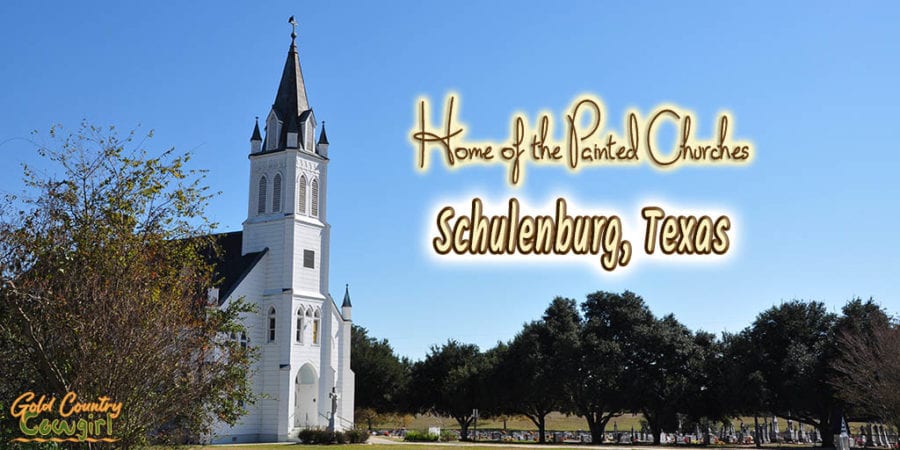
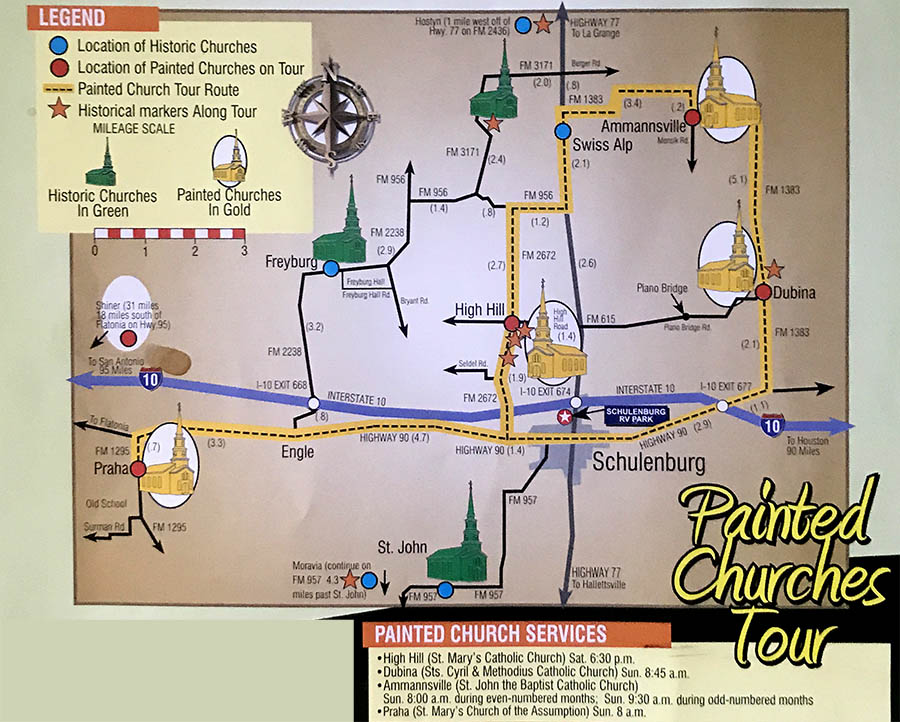
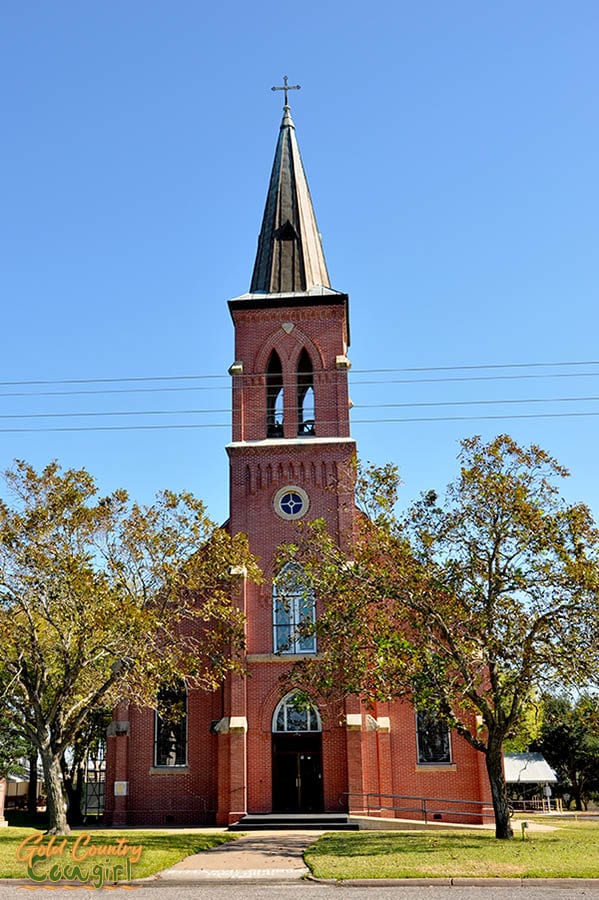
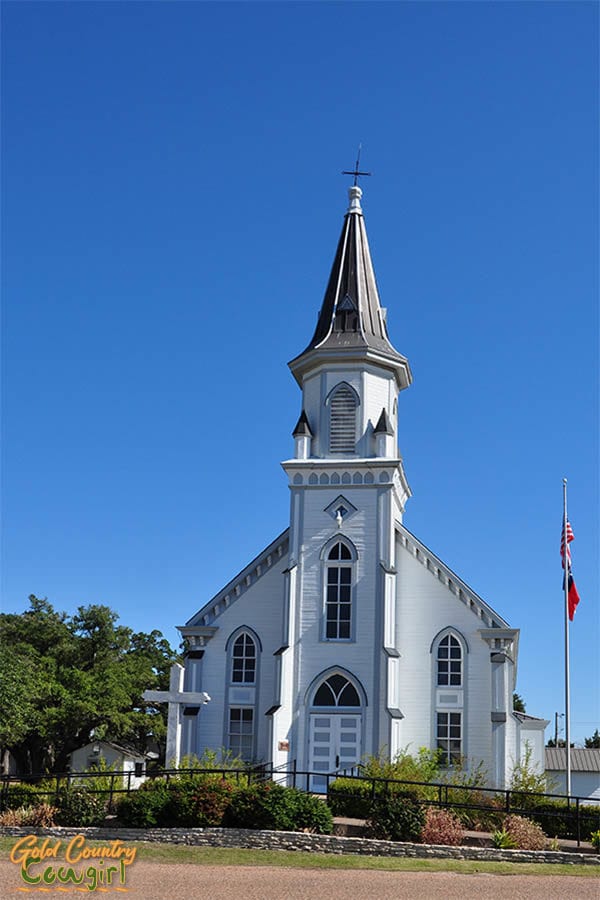
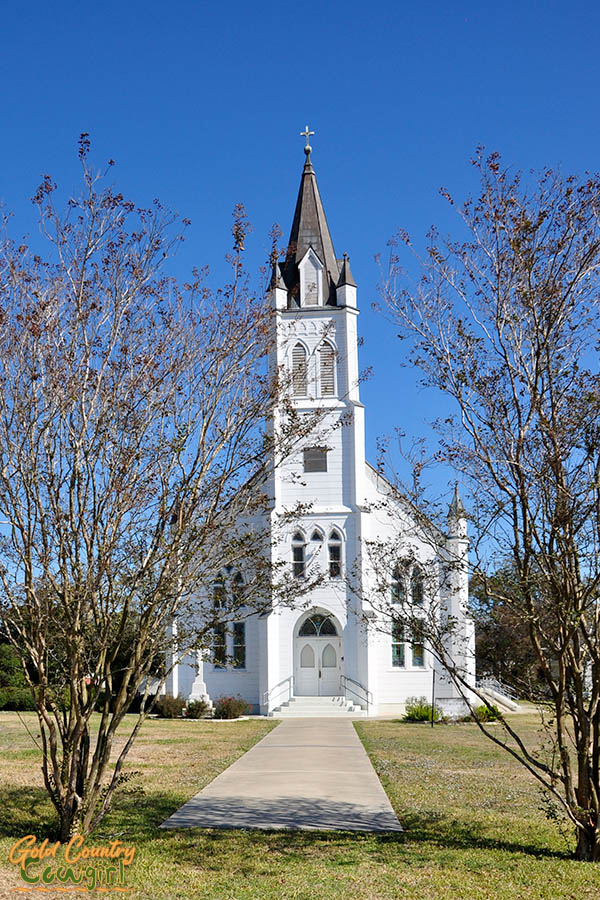

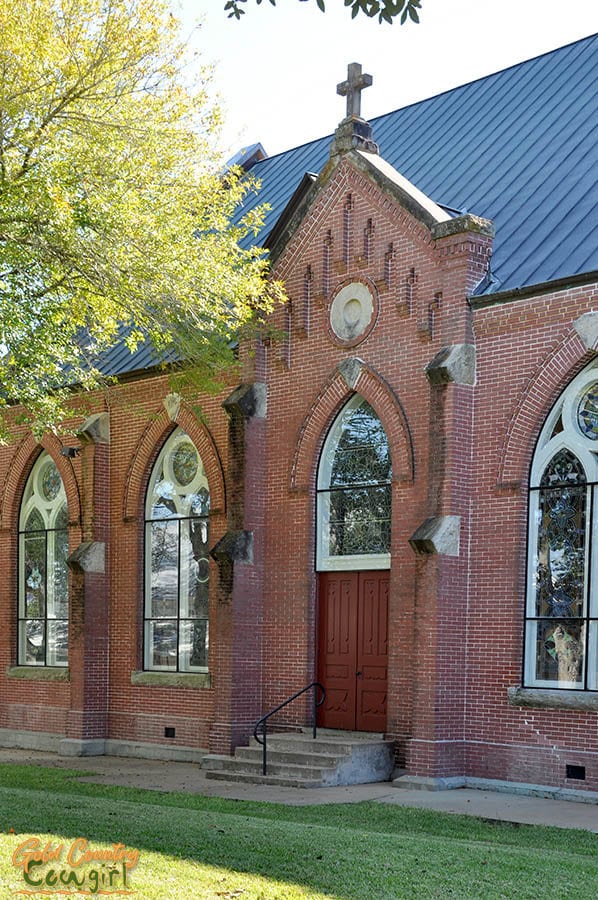
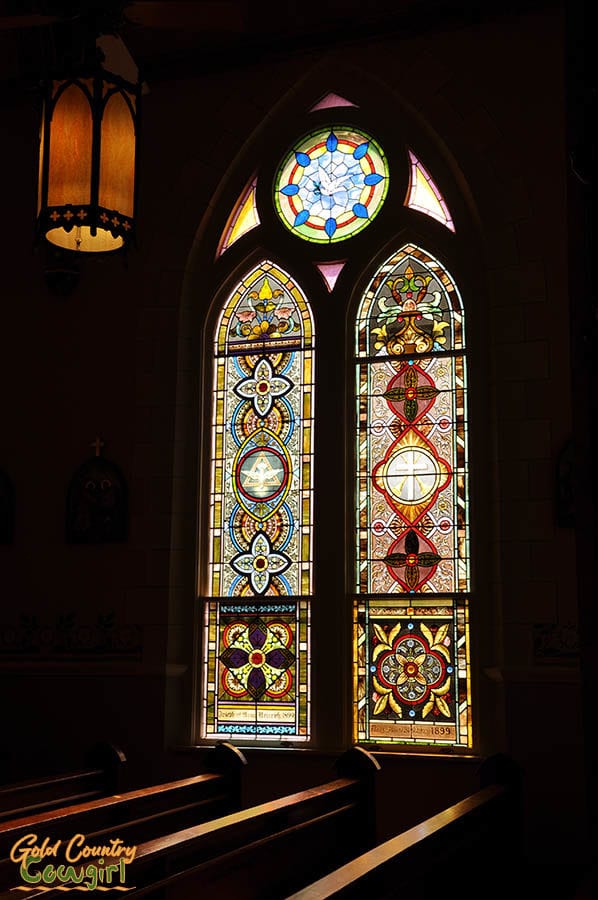

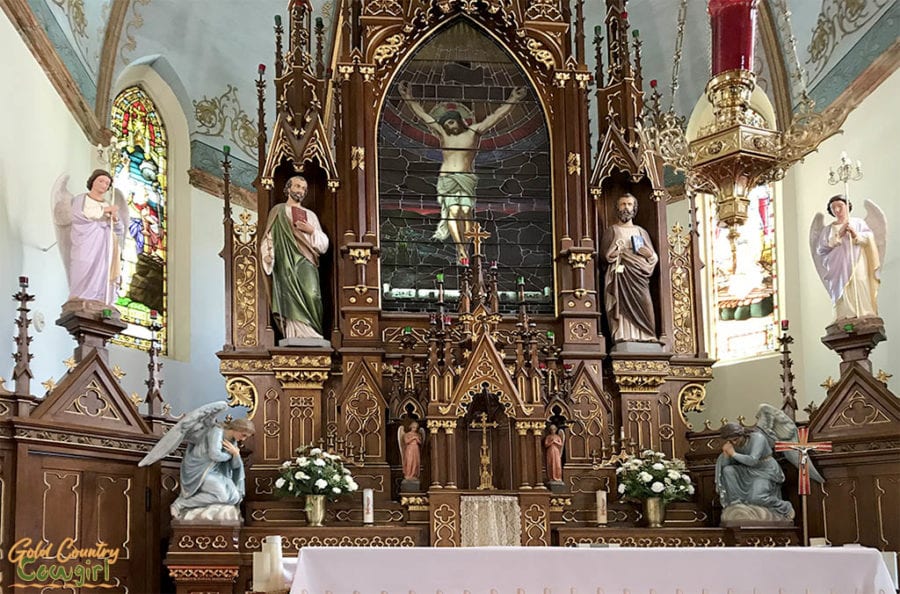
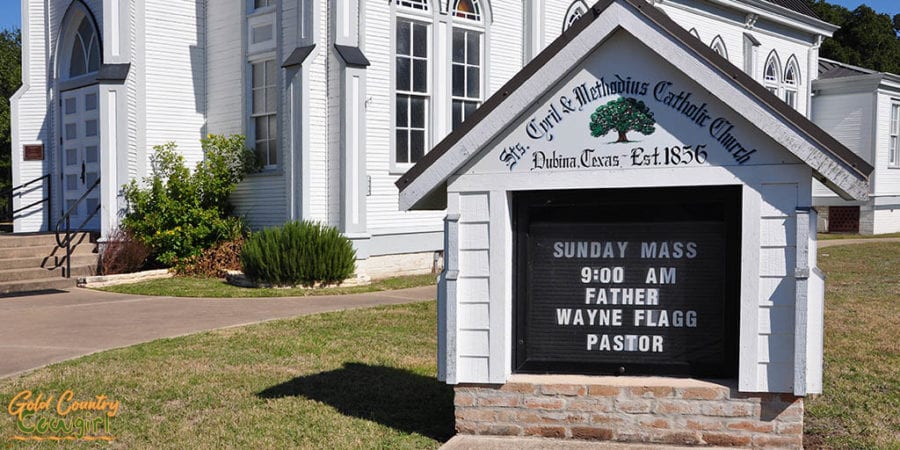
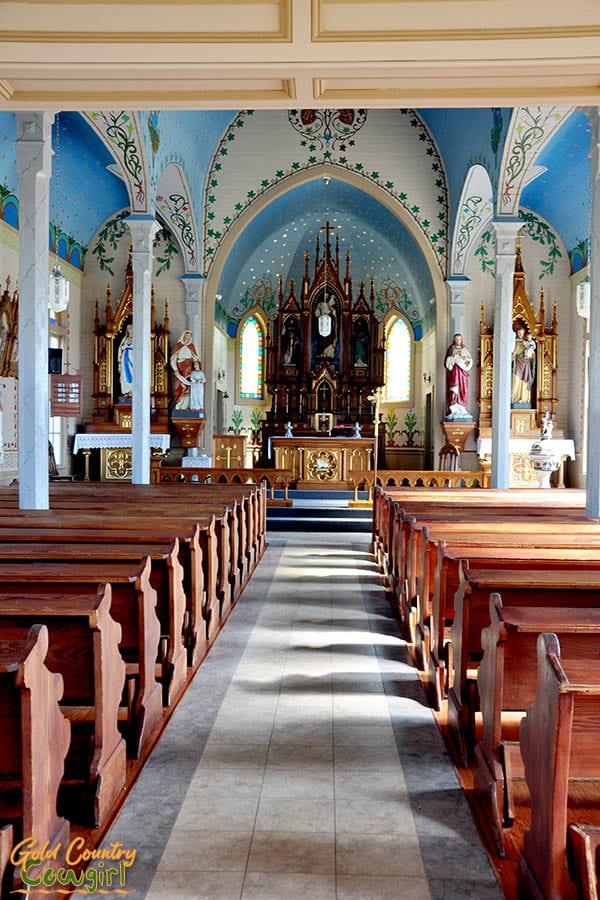
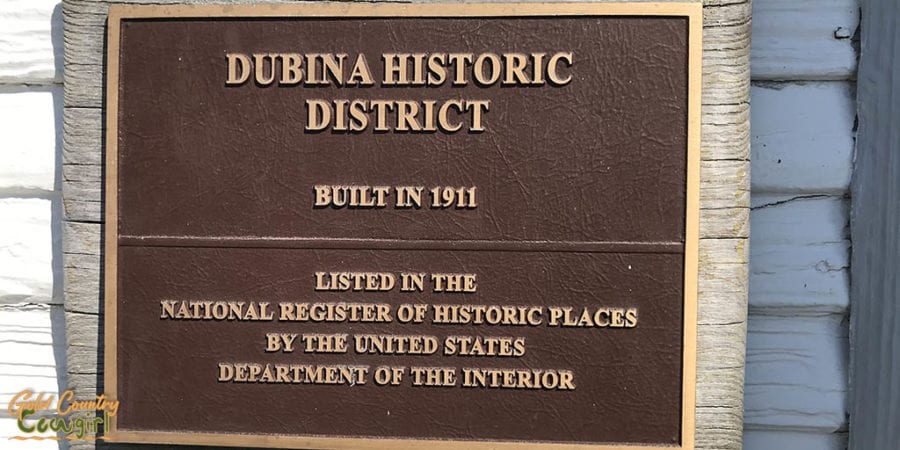
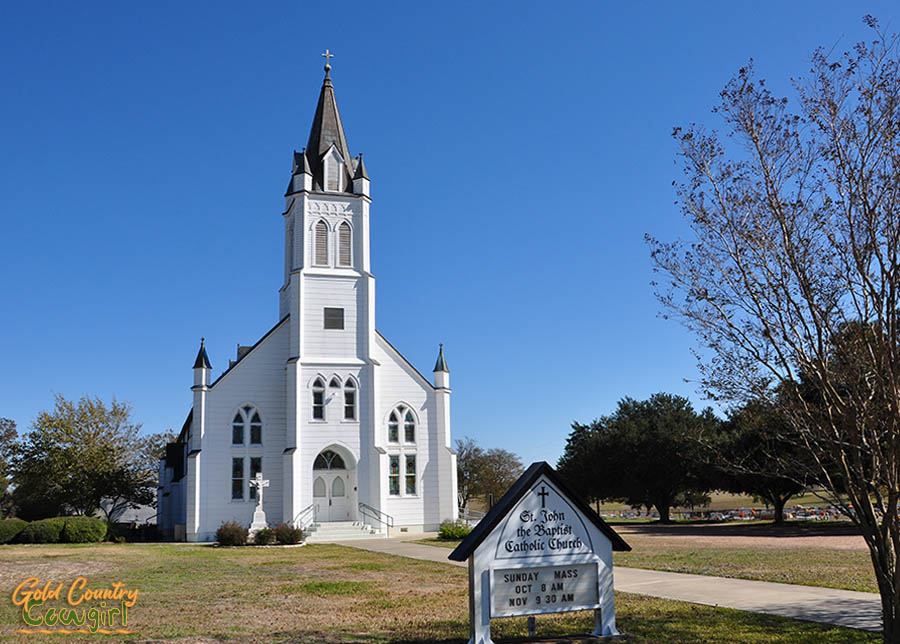
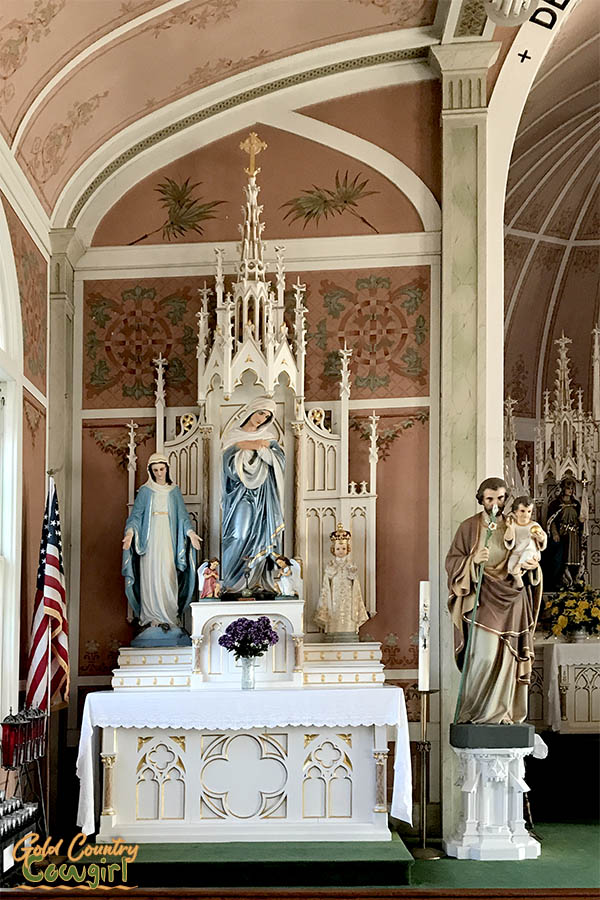
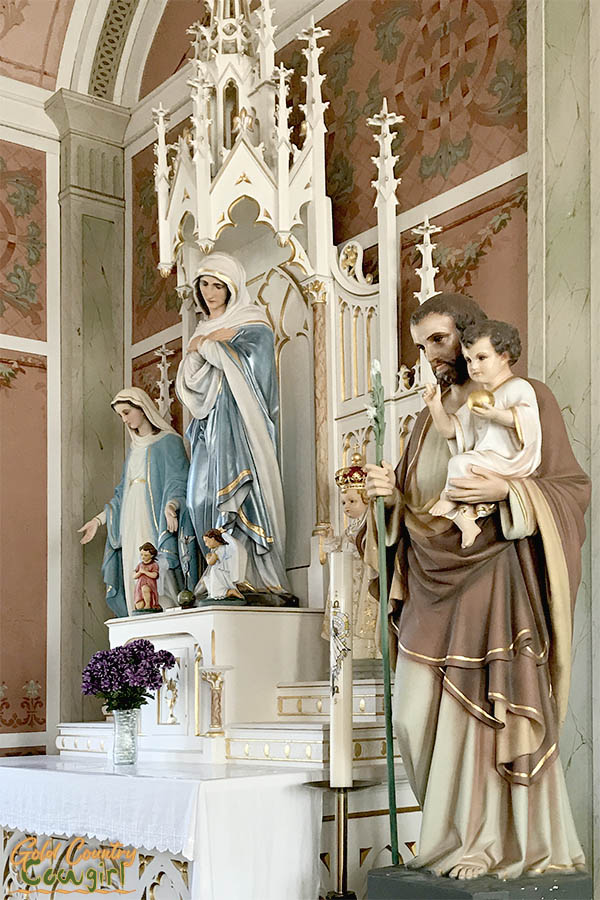
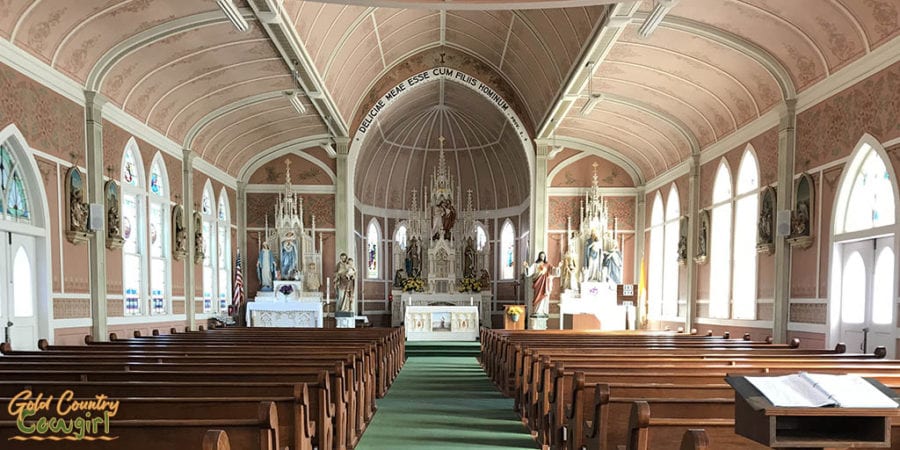

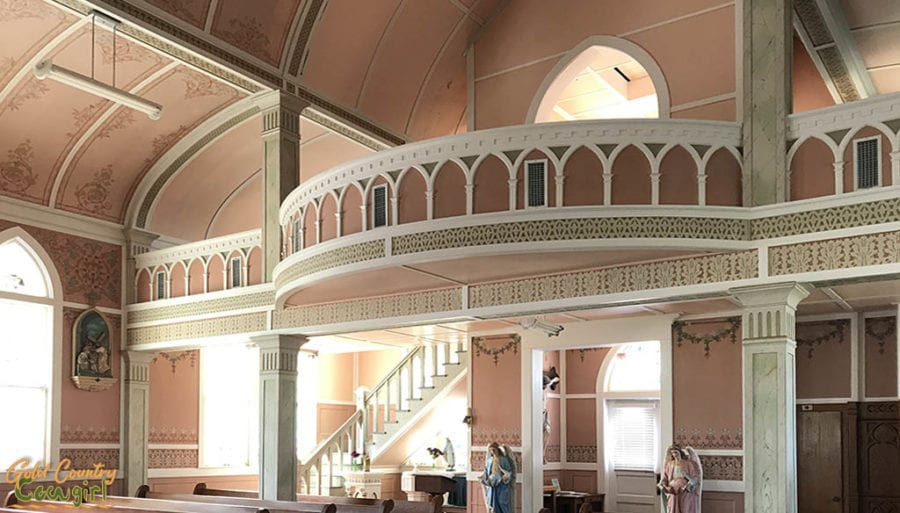
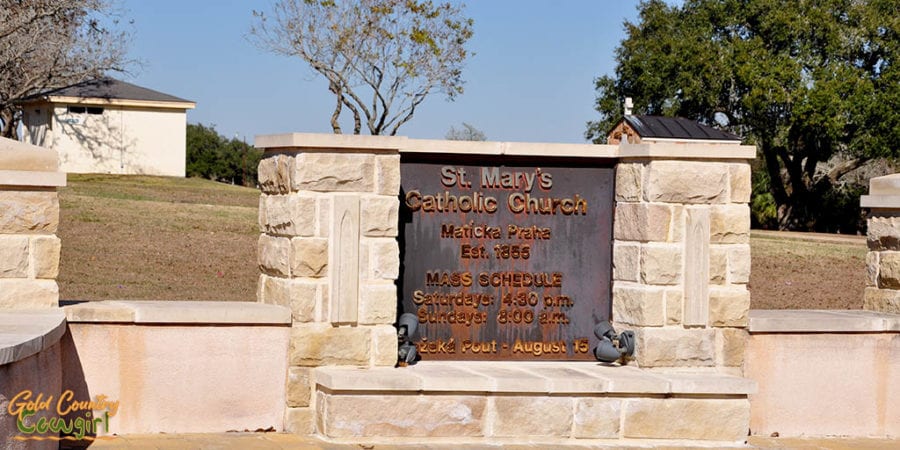
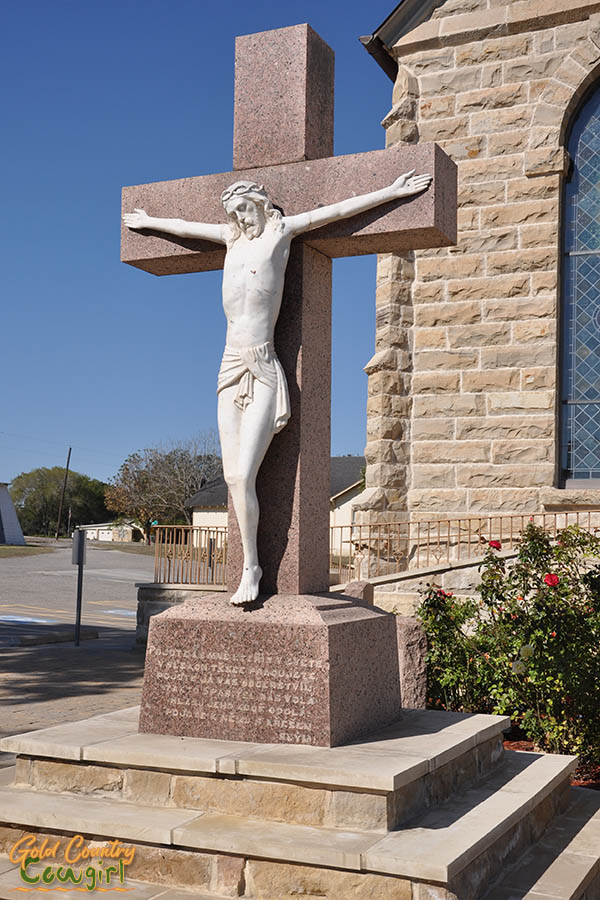


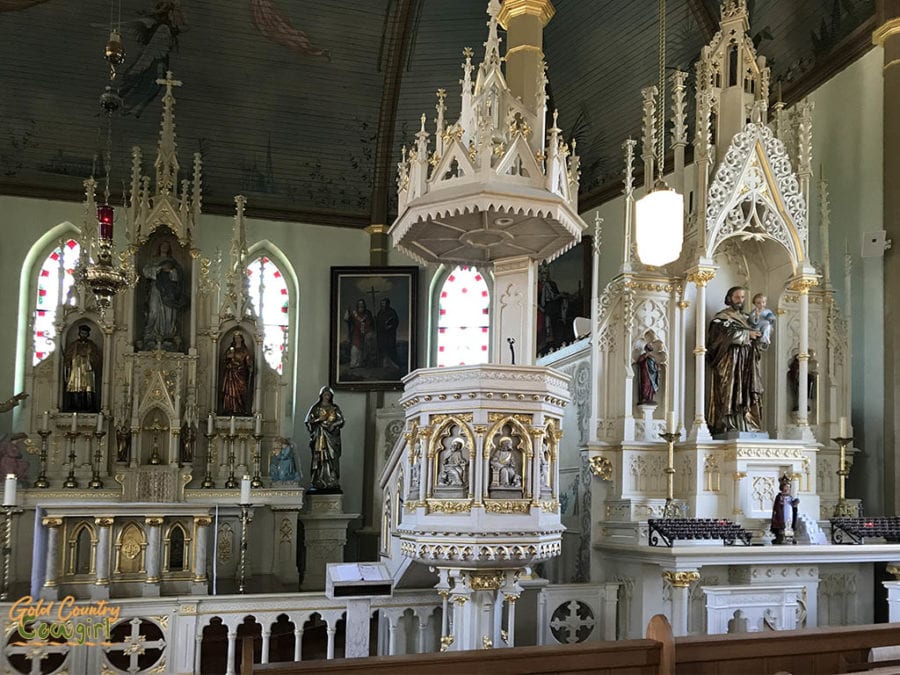
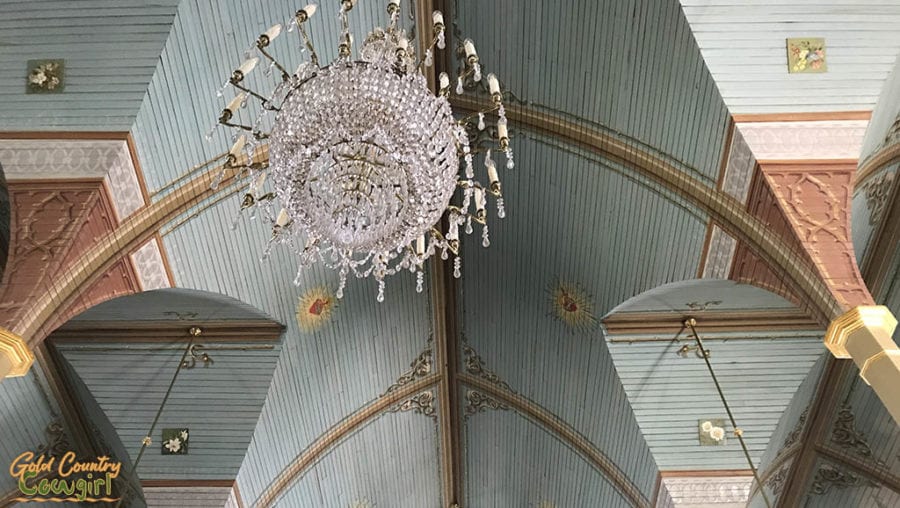
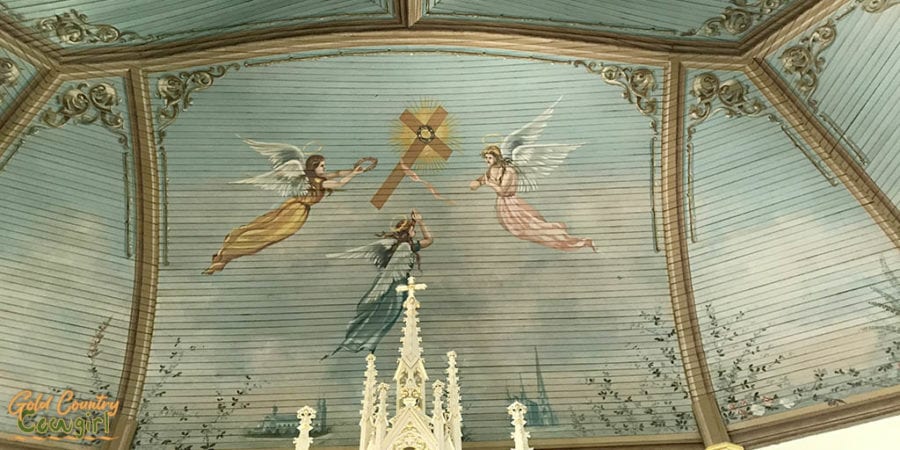
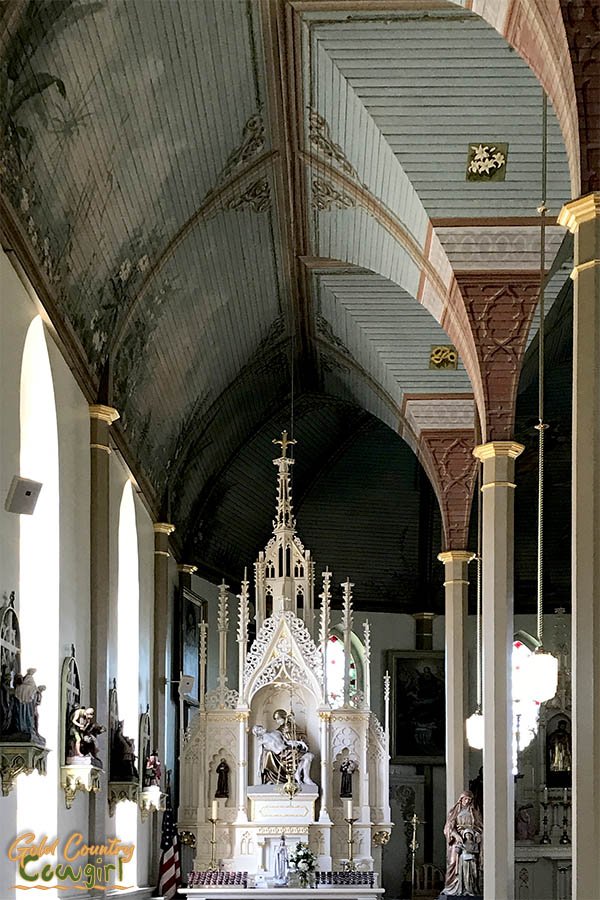
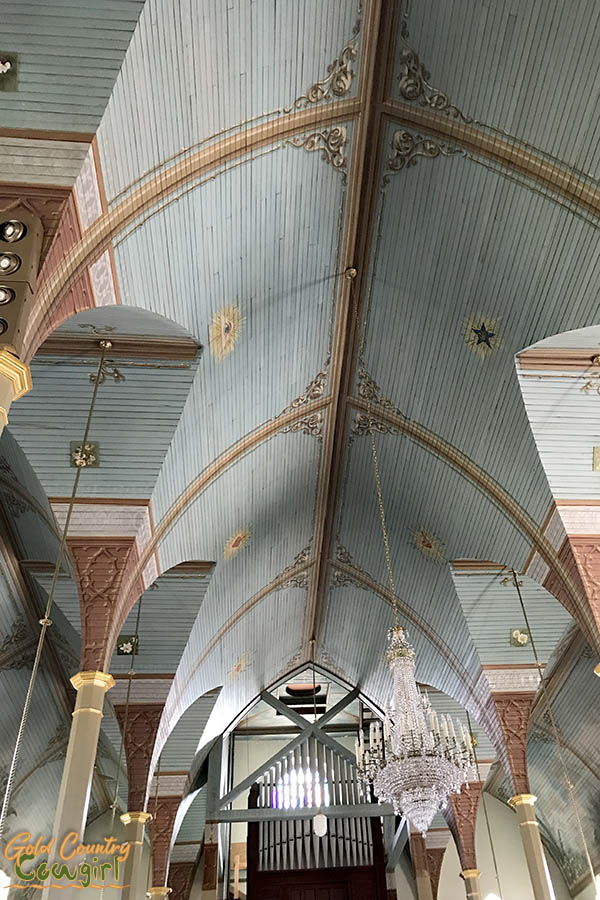

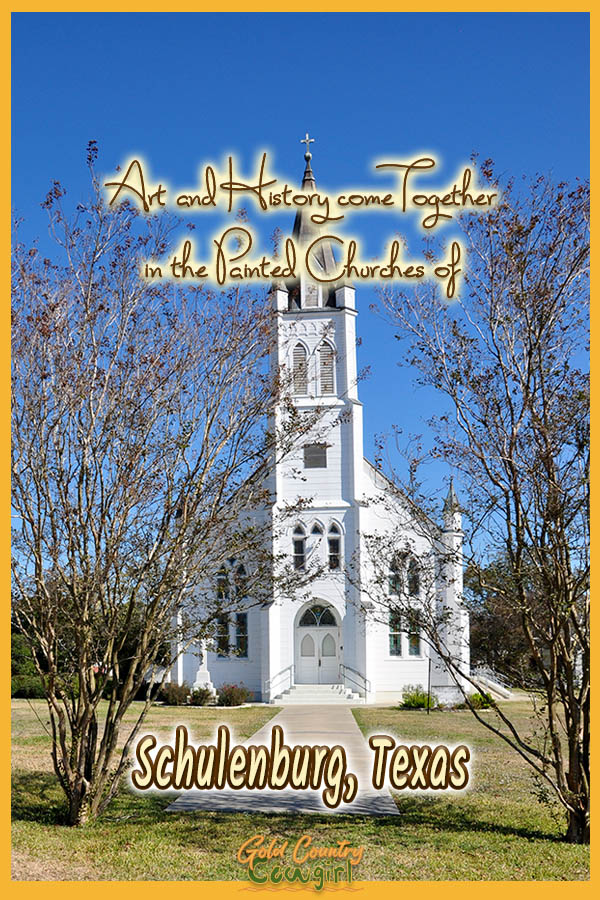
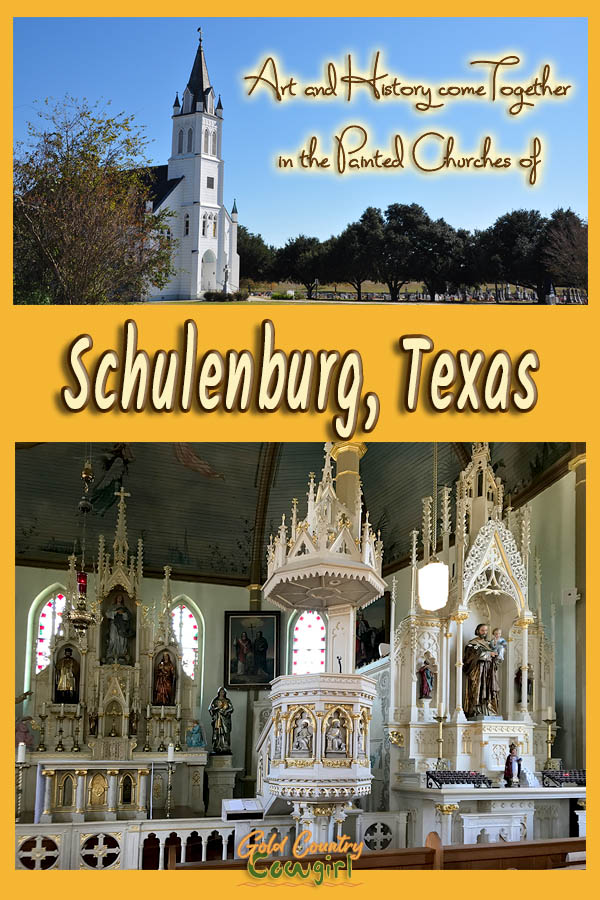
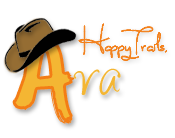

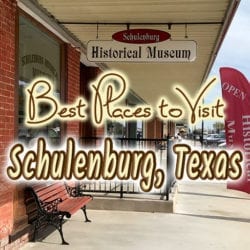

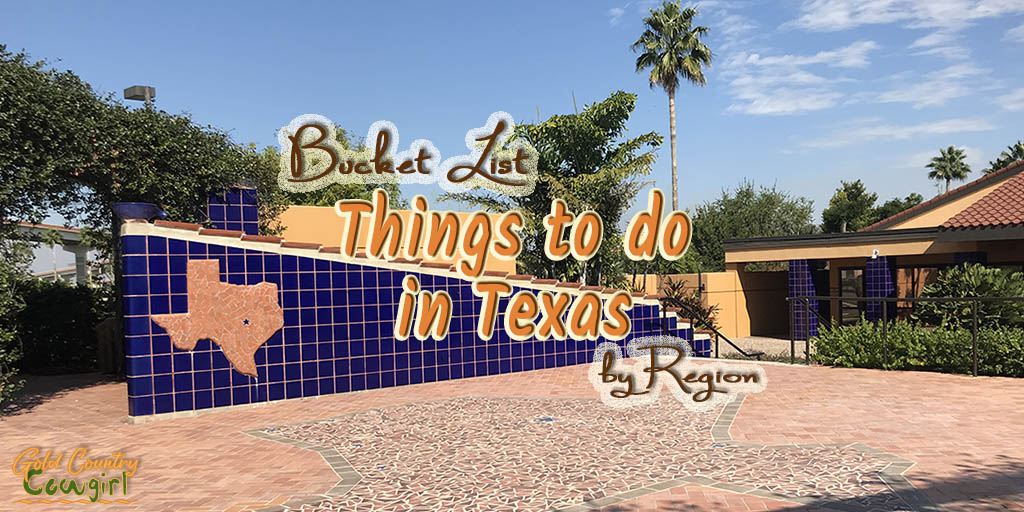
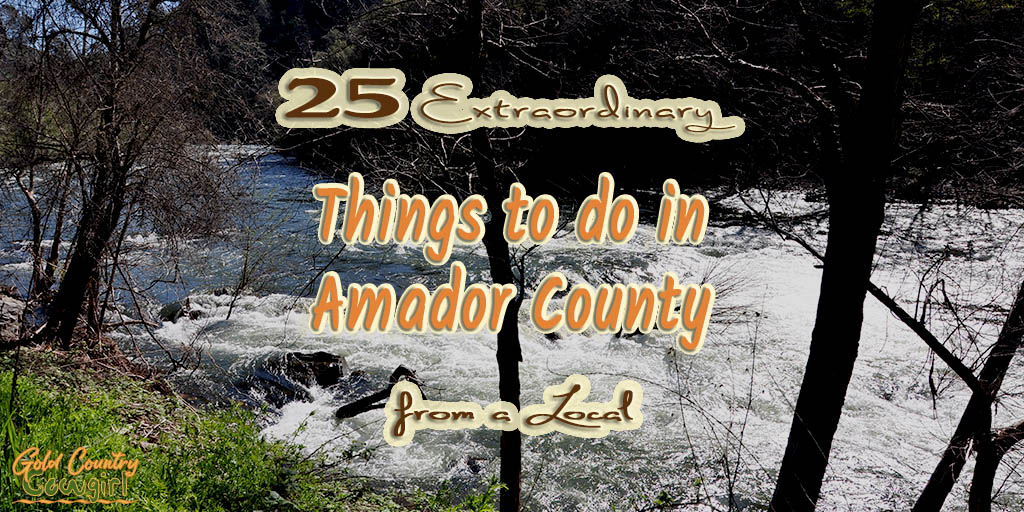
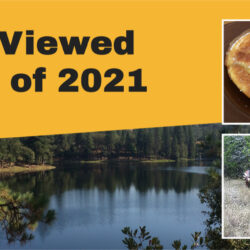















Texas is a state I’ve yet to visit when in the US. These painted churches are striking and so unique. it’s definitely a far cry from the churches we have in southern Europe!
The settlers weren’t wealthy like the communities they left behind. It’s amazing how they used paint to mimic all the grandeur.
Pingback: Downtown San Antonio Walking Tour | Golden Country Cowgirl